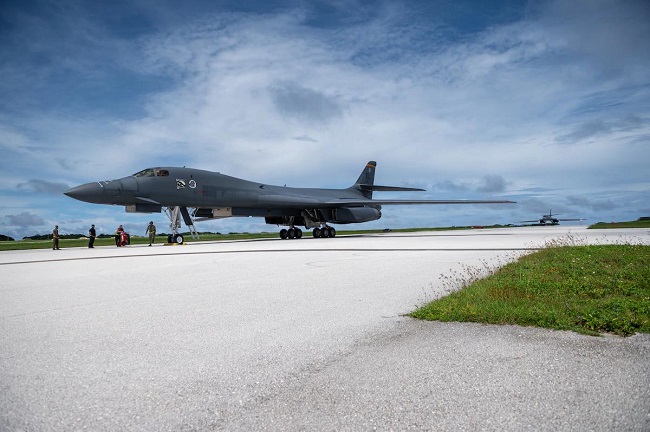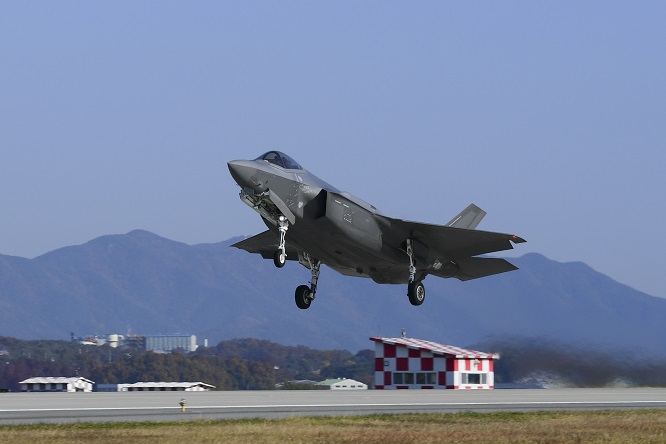
A B-1B Lancer strategic bomber at the Andersen Air Force Base on Guam is shown in this photo released by Pacific Air Forces.
SEOUL, Nov. 5 (Korea Bizwire) — Two U.S. B-1B Lancer strategic bombers staged joint drills with South Korean F-35A stealth fighter jets over the Korean Peninsula on Saturday, the last day of the allies’ Vigilant Storm exercise, according to Seoul’s defense authorities.
It marked the first time that the long-range supersonic bomber has been deployed to Korea since 2017, the Joint Chiefs of Staff (JCS) said.
After flying from Guam, the B-1Bs made a sortie over the peninsula alongside four F-35As and four U.S. F-16 fighters as part of the extended Vigilant Storm practice.
The move has demonstrated Washington’s firm commitment to extended deterrence for South Korea and the allies’ combined defense posture to deal resolutely with North Korea’s provocation whatever it is, the JCS said.
The allies kicked off the combined air training on Monday for a five-day run. But they extended it through Saturday in response to the North’s continued saber-rattling.
In ferocious protest, the North fired more than 30 missiles of various types this week alone, including an intercontinental ballistic missile on Thursday.
On Saturday, the North shot four short-range ballistic missiles (SRBMs) into the Yellow Sea.

An F-35A fighter of the South Korean Air Force takes off from an air base in Cheongju, central South Korea, as South Korea and the United States kicked off joint air drills, in this undated photo released by the South Korean Air Force on Nov. 1, 2022.
The Vigilant Storm involved also involved more than 100 U.S. assets, including F-35Bs, EA-18 electronic warfare aircraft and KC-135 tankers.
It was the first massive combined air drills by the allies in about five years.
Earlier this week, Pak Jong-chon, Pyongyang’s top military official, accused Seoul and Washington of pushing regional security to an “uncontrollable” stage with the decision to extend the Vigilant Storm and the North fired dozens of artillery shells into the eastern maritime buffer zone set under the 2018 inter-Korean military accord.
In Washington D.C., South Korean Defense Minister Lee Jong-sup had annual talks with his American counterpart Lloyd Austin on Thursday (local time).
They “reaffirmed the commitment of the U.S. to deploy United States strategic assets to the Korean Peninsula in a timely and coordinated manner as necessary, to enhance such measures, and identify new steps to reinforce deterrence in the face of the DPRK’s destabilizing activities,” read a joint communique.
The DPRK is the acronym for the North’s official name, the Democratic People’s Republic of Korea.
(Yonhap)






